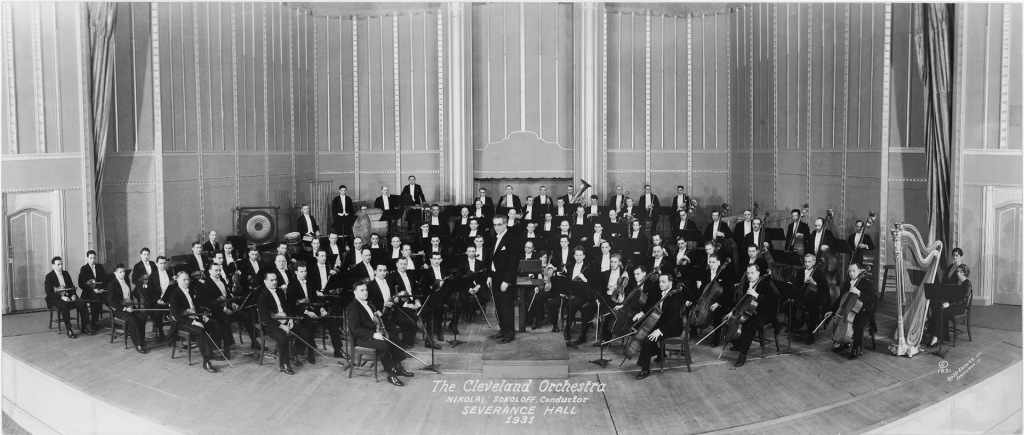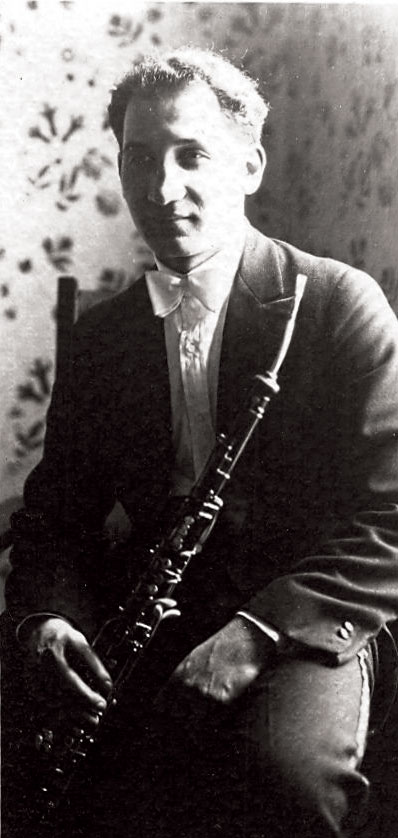In the early 1930s, Engelbert Brenner was an oboist in the Cleveland Orchestra. While in rehearsal one fateful day, the Franck Symphony in d minor was up. In the 2nd movement, after a short introduction, the English horn plays the main melody. Pitched in F, the opening two notes of this famous solo are a D flat and a C, which are neighboring notes. But the D flat is voiced through the entire instrument while the C is ‘below the break’, using far less of the instrument’s bore in producing the tone. Because of the physical differences of the instrument bore used for these two notes, their timbre can be completely different, making the notes sound as if they are not closely related, and disjointed. Brenner was not the English hornist for the Cleveland Orchestra – yet. The 2nd movement was started in the rehearsal, but the conductor heard the tonal difference between the first two notes of the solo, stopped the orchestra, and asked the musician to play it so those two notes were more closely related in tone. But after several starts and stops, the conductor asked Brenner if he could play that solo with a less perceptible register break. Brenner played it to the conductor’s liking and was later assigned the English horn position of the Cleveland Orchestra.
The Cleveland Orchestra later traveled to New York to play Carnegie Hall. On their program were two works that had prominent English horn parts – Debussy’s La Mer, and the César Franck Symphony. After the performance, Brenner was approached backstage by a representative of the New York Philharmonic and told that Arturo Toscanini, the Philharmonic’s legendary conductor, would like to hear him play, and Brenner was instructed to travel by train to Philadelphia, where Maestro Toscanini would be available to hear the young Brenner play. This audition took place in a hotel room. Franck and Debussy were requested, along with other English horn excerpts. Toscanini conducted, and Brenner played. Brenner asked if he would like to hear the oboe as well. The maestro stated, in Italian, that with his intonation being so precise on English horn, he concluded that it would be just as great on oboe.
On Christmas Eve in 1931, Brenner received a telegram from the New York Philharmonic, inviting him to join that orchestra. His tenure lasted for 41 years. And without the two opening notes of the César Franck solo, might not ever have happened.
I met Engelbert Brenner after he retired from the New York Philharmonic. His playing was strong, accurate, and expressive beyond description. I was lucky enough to play many concerts as his 2nd oboist and learned so much by observing his craft and art up close. But how must he have sounded as a younger man? I thought I would never know. But a recording surfaced online recently that I was thrilled to find. Toscanini’s successor, Sir John Barbirolli, performed his arrangement of Dido & Aeneas, in which the aria “When I Am Laid In Earth” is played by none other than Engelbert Brenner on English horn. This is a recording from that live broadcast from 1938.
CLICK HERE TO HEAR BRENNER PLAY THIS ENGLISH HORN SOLO – 1938/NEW YORK PHILHARMONIC
Long before the time of solo microphones, you can hear Brenner sing, emote, and whisper his musical lines. His ability to project to the last row of the concert hall in both singing and whispering tones was a quality unique to his approach, craft, and artform.
While his tenure and fame came from his time in the New York Philharmonic, he holds a little-known honor with the Cleveland Orchestra. The beautiful Severance Hall was opened in 1931. For the hall’s opening night, a piece was commissioned – Composer Charles Martin Loeffler wrote “Evocation, for Orchestra, Women’s Chorus, and a Speaking Voice”. According to Brenner’s recollection, this piece began with English horn alone, making Engelbert Brenner’s playing the very first notes ever performed in Severance Hall.


Recent Comments